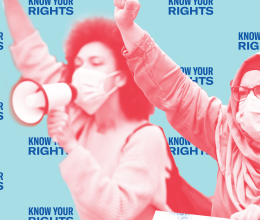Parsing Kernan’s answer should have yielded, at some point, either a yes or no. Kernan started by stating that “solitary confinement is a word that’s used . . . loosely . . . ”
But instead of explaining how he thought the word has been misapplied to Pelican Bay, he just reverted to the talking point that the guys in “the hole” are the so-called worst of the worst.
“[t]hese inmates again are the most dangerous gang leaders that we have in the state of California and, let the truth be told, in the nation. So these guys are really truly the most dangerous offenders. So we have definitely—Pelican Bay was built to house the worst of the worst. And it is meant to control their movements considerably. . . . So let’s just be very, very clear that these are bad guys, and so we keep them very controlled. But it is not solitary confinement, nor is it torturous behavior as described by some.Ok, so these guys are the most dangerous, the worst of the worst. But are they in fact kept in windowless, concrete cells for 22 and a half hours a day?
A couple minutes later, when Kernan suggested that there was no overcrowding at Pelican Bay because the inmates are housed in single cells, Olney pressed the question one more time: “Well, are those single cells, in fact, windowless concrete cells, and are they required to stay there 22 and a half hours a day?”
Kernan responded: “Um, well, they have programming, I don’t know if I would say 22 hours, 22 and a half hours a day, but, probably very close to that.” This is a sizeable number of words to say, in effect, "yes."
What could be the point of Kernan’s filibustering other than to avoid the real questions: Does it benefit public safety to house inmates in a concrete box? How do people react to extreme isolation? Is it inhumane to isolate a person in a windowless concrete cell for 22.5 hours a day for months, years, or even decades?
Mr. Kernan elected to end his interview rather than attempt to answer.
Hector Villagra is the Executive Director of the ACLU/SC.
Full transcript of Mr. Kernan’s radio interview:
Warren Olney: “Scott Kernan is Undersecretary of the Department of Corrections and [Rehabilitation], welcome back to our program. I understand that you helped to resolve some of these issues. Which of those that I listed were in fact dealt with, and did the state make some concessions?”
Scott Kernan: “I don’t know that I would say concessions; you know, the inmates had a list of demands, we took a look at them, and I think that at the end of the day we realized that as you just described a watch cap in inclement weather and a wall calendar didn’t pose significant security concerns and so those changes were made. We’re also looking at a number of things including the very complicated gang validation process. I’d also just point out to you that the inmates at Pelican Bay that started this are there because of their behavior. These are the gang leaders that are running the various prison gangs and as such are the scourge of society in our prisons. A lot of violence associated with it. So anyway we did evaluate it and we did make some changes to our policy and we’re going to look at the other changes that the inmates desire moving forward.”
KCRW: “What about at the other prisons?”
Scott Kernan: “Well really it was, again, generated by inmates at Pelican Bay. So the central issues were related to them and it really is a illustration of the power that these guys represent over other offenders. For at the height of it, six thousand, sixty-five hundred or so, at 13 prisons, although that dissipated very quickly, and really the core hunger strikers were probably under a hundred at Pelican Bay.”
KCRW: “It’s been reported that at Pelican Bay many prisoners are in solitary confinement, and then when they are they spend at least 22 and a half hours every day in windowless, concrete cells, the remaining time alone in concrete exercise yards, are those things true?”
Scott Kernan: “The solitary confinement is a word that’s used, I guess, loosely, a little bit. These inmates again are the most dangerous gang leaders that we have in the state of California and, let the truth be told, in the nation. These guys are running the Mexican mafia, the Nuestra Familia, the Black Guerilla family, the Aryan Brotherhood.” So these guys are really truly the most dangerous offenders. So we have definitely—Pelican Bay was built to house the worst of the worst. And it is meant to control their movements considerably. I mean these inmates are not there at Pelican Bay for just not obeying simple rules. They’re in there for murdering inmates, and for you know following through with their criminal enterprises on the street. So let’s just be very, very clear that these are bad guys, and so we keep them very controlled. But it is not solitary confinement, nor is it torturous behavior as described by some.”
KCRW: “There’s a panel of federal judges that have said the conditions within the prisons violate the constitutional ban on cruel and unusual punishment. Did they single out the kind of treatment that I described?”
Scott Kernan: “No, not at all. The court decision that you described is overall overcrowding in the system, and the fact that Pelican Bay inmates are largely single cell because they’re so dangerous. They’re one of the few areas that we have very reduced overcrowding, while the courts ruled that overall the Department’s population is overcrowded leading to those constitutional violations; it had nothing to do with the SHU specifically at Pelican Bay or any of the other SHUs that we have in the state.”
KCRW: “Well are those single cells, in fact, windowless concrete cells and are they required to stay there 22 and a half hours a day?”
Scott Kernan: “Um, well, they have programming, I don’t know if I would say 22 hours, 22 and a half hours a day, but, probably very close to that. They get an hour a day of yard and showers and if they have to go to they can have visits and go to medical appointments and the like but it is, it is stark correctional environment for our most dangerous offenders.”
KCRW: “Most dangerous as they are, there are those who say that conditions of that kind can produce panic attacks, depression, inability to concentrate, memory loss, aggression, self-mutilation, and various forms of psychosis. Is that true? And even if they are worst of the worst, is it appropriate to have those kinds of consequences?”
Scott Kernan: “Interesting question. The federal courts have been in the Department of corrections and rehabilitations mental health process for a long time and none of the inmates that are involved in this hunger strike at SHU, we don’t allow mental health inmates to be there. So any inmate that had any kind of mental health concern would not be housed in the SHU at Pelican Bay.”
KCRW: “Ok, so how long do you think it will take to resolve these other issues with what, you don’t want to call solitary confinement, and also with the question of gang validation which they complain as though I understand it that it takes so long that they’re then accused of being snitches when they get back into the general population or anywhere near it. I suppose if they’re confined to single cells they’re not really in the general population. What about those issues? Will that take you longer to resolve?”
Scott Kernan: “It’s a little bit more complicated than that. What they’re referring to is about the debriefing process is that when an inmate wants to get out of SHU and wants to disassociate himself with the gangs he can do so and he has to go through a debriefing process. And in that debriefing process he must identify criminal behavior that he’s been involved in, and others. The SHU inmates are taking umbrage with that suggestion, that that’s not appropriate. We completely disagree and if you talk to the inmates that have went[sic] through the debriefing process and got out of the gang life, they will tell you that the debriefing process, we get it right a hundred percent of the time. So you know while we’re going to look at all these issues, we definitely think that there could be some changes to the validation and debriefing process but we’re going to do that with the input of not only the stakeholders of the inmate side but the stakeholders of the law enforcement and the gang investigators that work so hard every day to protect our streets and our prisons.”
KCRW: “Okay, well thanks for being on our program."
Scott Kernan: “Thank you.”
KCRW: “Scott Kernan, Undersecretary of the California Department of Corrections and Rehabilitation, elected not to talk with any of our other guests.”







